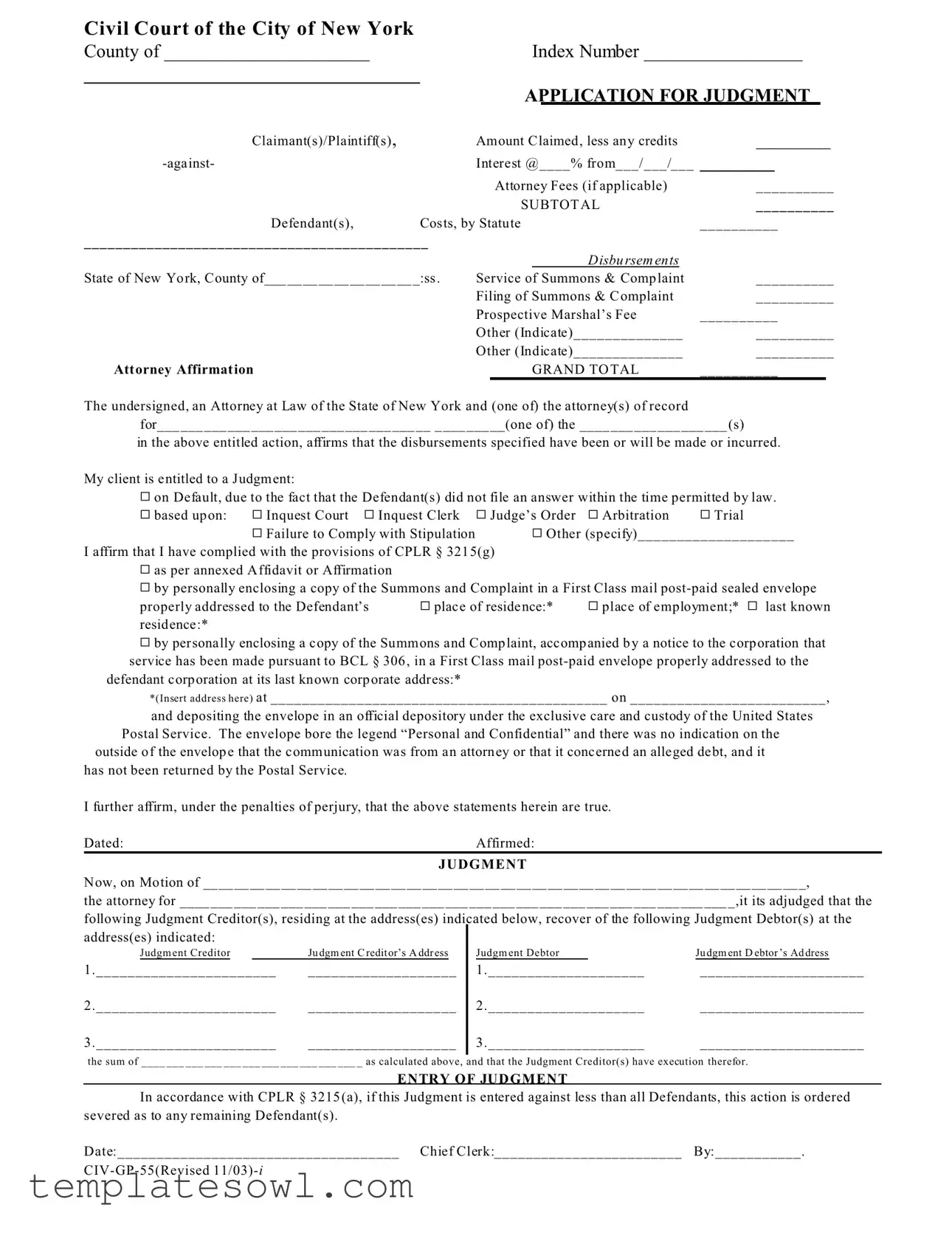What is the NY Judgment form used for?
The NY Judgment form is a legal document used in civil court to request a judgment against a defendant when they fail to respond to a claim. It outlines the amount of money owed, including interest and any attorney fees, and details the costs associated with the filing. This form is essential when a claimant seeks to formalize their request for judgment and move forward legally.
Who can file a NY Judgment form?
Typically, an attorney representing a claimant or plaintiff files the NY Judgment form. The attorney must be authorized to practice law in New York. While individuals can represent themselves in small claims, using the form may involve legal understanding and guidance that an attorney can provide effectively.
What information must be included in the NY Judgment form?
The form requires several key pieces of information. This includes the claimant's name, the amount claimed, applicable interest, attorney fees, and a detailed account of disbursements. Furthermore, the addresses of both the judgment creditor and debtor are necessary, as well as an affirmation by the attorney regarding compliance with service requirements.
What does it mean if the judgment is entered "on default"?
A judgment entered "on default" indicates that the defendant did not respond to the lawsuit within the legally allowed time frame. This allows the plaintiff to obtain a judgment without further litigation since the defendant missed their chance to contest the claim. It simplifies the process for the party seeking judgment.
Can I collect on a judgment immediately after it is entered?
Once a judgment is entered, the creditor cannot always collect immediately. They must follow specific legal procedures to enforce the judgment, such as obtaining an execution against the debtor's assets. It's often necessary to gather additional documentation regarding the debtor's financial situation before proceeding with collection efforts.
What should I do if I believe my judgment form has been improperly filed?
If there are concerns about the improper filing of a judgment form, it’s crucial to contact an attorney. They can guide you on whether to file a motion to vacate the judgment or to address any procedural issues. Acting quickly is important, as strict timeframes may apply.
Are there any fees associated with filing the NY Judgment form?
Yes, there are fees associated with filing the NY Judgment form. These can include filing fees and potential service fees for delivering the summons and complaint to the defendant. It’s advisable to review current fee schedules at the relevant court or consult with your attorney to anticipate costs.
What happens if the debtor does not pay the judgment?
If the debtor fails to pay the judgment, the creditor may take legal steps to enforce it. This could include garnishing wages, seizing bank accounts, or placing liens on property. It's essential to follow up on the judgment and understand the legal remedies available to ensure collection of the owed amount.
How long does a judgment last in New York?
A judgment in New York typically lasts for 20 years. However, it is essential to renew the judgment before it expires if collection efforts are still underway. Procedures for renewing a judgment must be followed to maintain the ability to enforce it within that designated timeframe.

